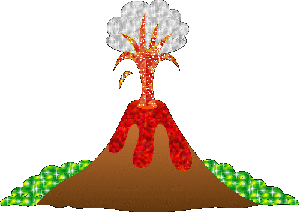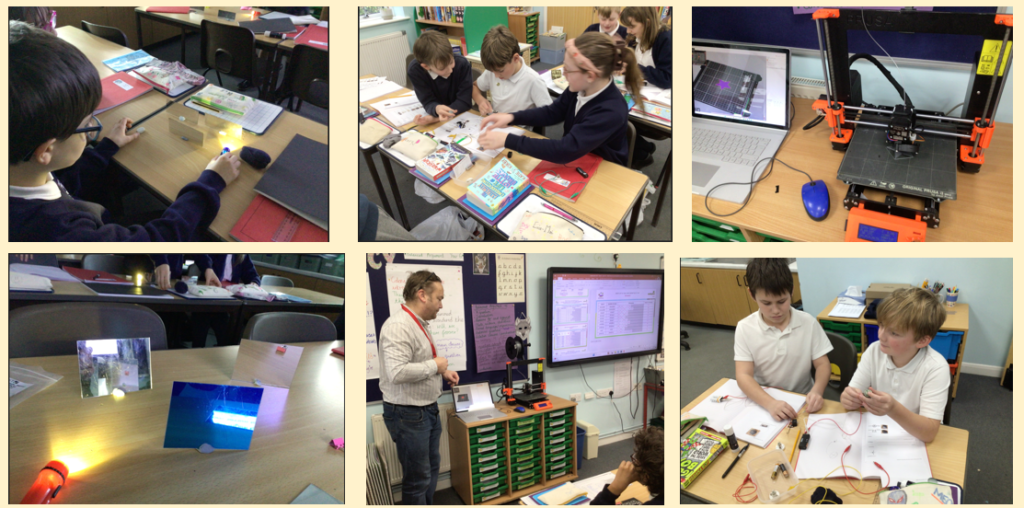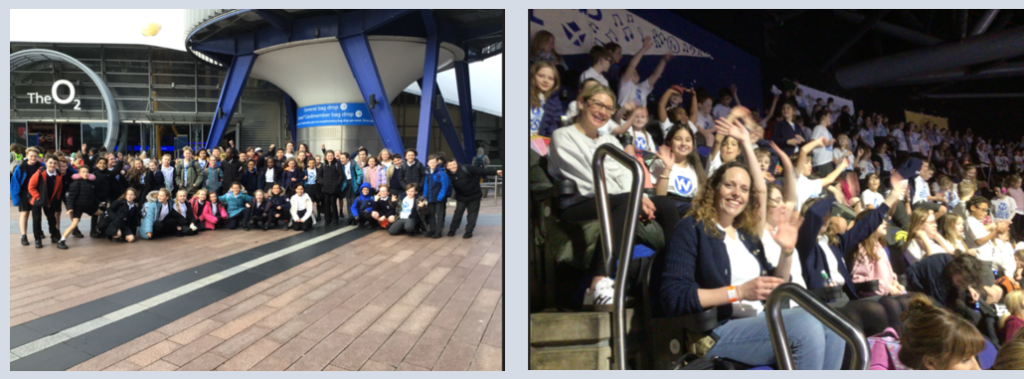Welcome to Class 6 - 2024/25
Mrs Galpin is our class teacher.
Mrs Eadsforth is our PPA teacher on a Tuesday and Thursday afternoon.
Miss Budworth is our teaching assistant.

Reading Spine 2024-2025

Term 6 - World War II and Transition
"To make an end is to make a beginning. The end is where we start from." T. S. Eliot (Little Gidding)
Looking Ahead – An Exciting Final Term
As we head into Term 6, our journey through World War II continues with a focus on The Home Front, exploring how ordinary people lived, adapted and contributed during extraordinary times. It’s a fascinating and powerful topic, and one that we know will continue to capture the interest and imagination of our Year 6 pupils.
This term is always a very special one – a time filled with excitement and celebration, but also moments of reflection and anticipation. As we prepare to say goodbye to primary school, we’ll be cherishing the memories and achievements we’ve made while also looking forward to the new adventures and friendships that await in secondary school. It’s a time of mixed emotions, but one we hope will be remembered with great fondness and pride.
To help support this important transition, we have a number of activities planned to ensure the children feel confident and well-prepared for the next stage in their education. We begin with a very special event – the Leavers’ Service with the Salisbury Diocese, held in the beautiful and poignant setting of Salisbury Cathedral. This will be a chance for pupils to come together with others across the region to reflect, celebrate and look ahead.
We’re also thrilled to be preparing for our end-of-year performance of Superstan – a vibrant and hilarious play that promises to be a real highlight of the term. It will be a joyful opportunity to perform for our school and wider community, and the perfect platform on which to say our final farewells.
As T.S. Eliot once said, “To make an end is to make a beginning.” So let’s go out with energy, laughter and pride – and make this final term one to remember!
Term 5 - Round-up
What an incredible term it has been for Year 6! This term has truly been a whirlwind, marked by determination, resilience, and well-deserved success. The children approached their SATs with maturity, focus and an outstanding attitude towards their learning. Every single pupil gave their very best, and they should be immensely proud of their achievements – as are we all. Their hard work, dedication and positivity have been a true credit to themselves, their families, and our school community.
No sooner had the final full stop been written on the last SATs paper than we were off to the Boscombe Down Aviation Collection (BDAC) at Old Sarum. It was a fantastic, hands-on day that brought our World War II topic vividly to life. The children were fully immersed in a wide range of activities, from flying simulators and exploring aircraft construction, to discovering the role of mathematics in the Dambusters Raid. It was a truly memorable experience.
We were delighted to receive high praise from the BDAC team following the visit. In the words of their leader:
“We just wanted to let you know what a credit your Year 6 pupils were to your school. Every one of the 16 staff involved with their visit commented on how very well-behaved and engaged the children were, despite the intensive day. From flying simulators to exploring engineering and history, they participated fully and respectfully in all eight stations across the hangars. Comments included, ‘What a pleasure to have such a well-behaved and attentive load of kids’, ‘A real credit to their school’, and ‘They were a great bunch of kids and we thoroughly enjoyed it – looking forward to the next one.’”
It was a wonderful way to celebrate the end of SATs and to continue our learning in such a dynamic environment. Well done, Year 6 – we are incredibly proud of you all!
Term 5 - World War II
This Summer Term, Year 6 will be diving into the captivating history of World War II, focusing particularly on the secret role Salisbury played in the war effort. We will explore the fascinating story of the Spitfires, aircraft crucial to the Battle of Britain, and learn how they were secretly manufactured in our very own region. An exciting trip to the Boscombe Down Aviation Collection is planned as part of our history lessons, where we can see a real Spitfire and gain a deeper understanding of their significance. We will also explore the lives of people on the Home Front, examining how the war affected families, rationing, and the roles of women and older generations. The evacuation of children and the challenges of daily life during the war will also be key topics in our discussions.
In reading and writing, we’ll bring the era to life through a variety of engaging texts. Our main text this term will be When the Sky Falls by Phil Earle, which is a rich text and a captivating read. Analysing this book using the VIPERS strategy to build our comprehension skills will undoubtedly enrich our writing this term. In addition, we will explore a range of non-fiction texts to gather information about World War II and study the emotional depth of letters, poetry, and wartime writings. As writers, we will create informal letters, including one from the perspective of a child evacuee and another from a soldier on the front line, as well as a formal letter of thanks to the staff at the Boscombe Down Aviation Collection after our trip. We will also craft a descriptive piece, using vivid and powerful imagery, imagining the reflection of a veteran on his experiences as a soldier.
In PSHE, we’ll focus on the unit ‘Being My Best,’ which will help us identify our aspirations, set personal goals, and think about how we manage risk. We’ll also explore ways to look after our mental health, a crucial part of our well-being.
It promises to be an exciting and enriching term, with plenty of hands-on experiences, historical exploration, and skill development.
Additional Texts for Term 5

Term 4 - Round-up
This Spring Term has been a whirlwind of excitement and learning! We’ve had so much fun, from celebrating World Book Day in our best book-themed outfits and writing our own school narrative, to bringing Maya folk tales to life through performance. Each activity has been a chance for creativity and teamwork, and we’ve enjoyed every moment of it! Let’s explore these fantastic events in more detail.
Maya Activities
As part of our Maya-themed learning, we wrote our own versions of a Maya folk tale, inspired by the wonderful book The Rain Player. We practised our oracy skills by reading and performing these stories to our Year 6 audience, which was a brilliant way to build confidence and showcase our creativity. Of course, no celebration of the ancient Maya would be complete without mentioning cacao, their sacred drink, which was considered a gift from the gods. In true Maya style, we enjoyed a warm cup of hot cacao during the half-time interval, adding a delicious and authentic touch to our performance experience.
Year 6 took their Maya learning to the next level by getting hands-on with one of the most important foods in ancient Maya culture—maize! Not only did we learn about its sacred significance, but we also put our culinary skills to the test by using maize flour to make our very own tortillas.
What fantastic chefs we turned out to be! If your child hasn’t yet given you a taste of their Maya-inspired cooking, perhaps it’s time to request a home-cooked feast. After all, what’s cooking without the eating?
And, true to form, we thoroughly enjoyed our tortillas with a generous helping of guacamole and salsa… or perhaps it was guacamole and salsa with a side of tortillas! The photos certainly tell the full story of our deliciously fun adventure in the kitchen!
Term 4 - The Maya
Additional Texts for Term 4

A very exciting term awaits Year 6 as we explore the fascinating world of the Maya civilisation. We will distinguish facts from common myths, using research and historical sources—which is challenging even for the most experienced archaeologists. Much of the Maya civilisation’s written records were created on materials that have not survived the test of time, such as bark paper and wooden codices, which have deteriorated over the centuries. Additionally, many of the surviving texts were destroyed during the Spanish conquest in the 16th century, as the Spanish saw them as pagan and ordered their burning. The Maya also relied heavily on oral traditions, meaning much of their knowledge was passed down verbally rather than in written form, leaving gaps in the historical record. Nonetheless, Year 6 will analyse historical sources to generate an authentic story of the Maya civilisation, piecing together insights from surviving texts, archaeological evidence, and modern research.
Excitingly, we will also learn about the vital role that maize (corn) and cacao (chocolate) played in Maya society, both as essential foods and cultural symbols, which will be explored in depth. Perhaps a little storytelling, along with some homemade hot chocolate for half-time entertainment, might inspire us to re-write a Maya folk tale!
Year 6 will also uncover the Maya’s sophisticated systems of writing and mathematics, including their use of intricate hieroglyphs and the groundbreaking concept of the number zero. It was one of the first instances in human history where a true zero symbol was used in a numerical system. While other ancient civilisations, such as the Babylonians, had a concept of zero, the Maya were the first to use a placeholder zero in a place-value system, similar to how we use zero in modern mathematics today.
To bring the Maya civilisation into a global context, we will also look at what was happening in England and around the world during the same time periods. Join us on this exciting journey to understand the Maya’s profound and lasting influence on history and culture, which continues to shape the world today!
Term 3 - Round-up

Year 6 has been absolutely electrified by their learning this term, diving into the exciting worlds of light and electricity! Students have been busy discovering how to create and draw electrical circuits in series, while also investigating the wonders of voltage. A special spark of excitement came from our amazing STEM visitor, Mr. Edwards, who brought his incredible 3D printer to create a silver star for the class to treasure. The children were fascinated by the session, and we’re thrilled to announce that we hope to recharge the experience by inviting Mr. Edwards back in the Summer term to assist with our DT project. A huge thank you to Mr. Edwards for inspiring our learners – we can’t wait to see what else we can power up together! Every pun intended.
The Year 6 children, together with Year 5, had an unforgettable experience as part of The Young Voices Choir 2025 at the O2 Arena in London. They were absolutely thrilled to be part of the largest children’s choir in the world, joining thousands of other young singers to create an incredible atmosphere. The performance was filled with show-stopping moments, including a special appearance from a singer from Strictly Come Dancing, who brought tears to the crowd with a soulful rendition of Bob Marley’s greatest hits. Both Year 5 and Year 6 children were over the moon to be part of such a spectacular event. A huge thank you to Mrs. Staplehurst for organising such a wonderful event; the children are so grateful for all the hard work and dedication that went into making it happen. It’s a memory they will treasure for years to come!

Term 3 - The Americas
This term we will be exploring The Americas. This is a rich area of learning: The Americas span the length of the globe with huge differences in culture, climate, flora and fauna. As a team, we will be learning about the many countries in North and South America; exploring the states within the USA; studying the geography of the land – including the political drivers of settlement; and investigating the biodiversity within the varied biomes across the latitudes.
To enrich this study, we have selected gorgeous texts with beautifully lyrical language. They will also provide a focus for our art lessons in collage, where we will study the use of negative and positive space and the effect this has on the viewer. The emotional reaction to many of the paintings and collage pieces during our first lesson this term was delightful, perfectly demonstrating how art can evoke strong reactions. We will use this knowledge to further develop our inference within the texts we read and consider both the author’s language and illustrator’s choices.
In computing, we shall be building on our knowledge of computer aided design (CAD) using TinkerCAD, which is free and can be explored further at home, if desired.
Please do take a look at our curriculum overview, the 100 recommended reads for Year 6, and the parent planners and knowledge organisers, which are for your information. These can be found at the bottom of this webpage.
Additional Texts for Term 3

Term 2 - 2024 - Antarctica
We have started the new term with a new topic. We will be learning all about the continent of Antarctica; the highest, driest, coldest and windiest continent on the earth. We have already found out about the location of the continent and some of its major human and physical features. Throughout the rest of the term, we will be learning about the continent’s history and how scientists study the area to learn more about climate change.
Term 1 - 2024 - Evolution and Inheritance
During the first term of this year, our topic was science based. We learnt all about how life on earth evolved as habitats changed over time. We looked at skeletons and fossils to discover how these changes have occurred. Having studied rocks (especially sedimentary rocks) in the past, we knew how fossils were formed and could use these as evidence. We then went on to learn more about characteristics that animals inherit and those that are environmental. Following this, we studied how an animal of our choice has adapted to living in its environment. To round up our learning, we studied Charles Darwin and his groundbreaking theories that stunned the Victorian world and took part in an investigation to examine how finches beaks’ affect their ability to feed and thrive. At the end of the term, we were very excited to take part in a live online workshop with the Natural History Museum in London where we completed a ‘Timeline Treasure Hunt’ and examined how animal skeletons adapted to environmental changes.
In music, we have all been learning to play the ukulele. We have learnt how to strum and a few chords already. We are looking forward to being able to perform a piece for our parents later this year.
